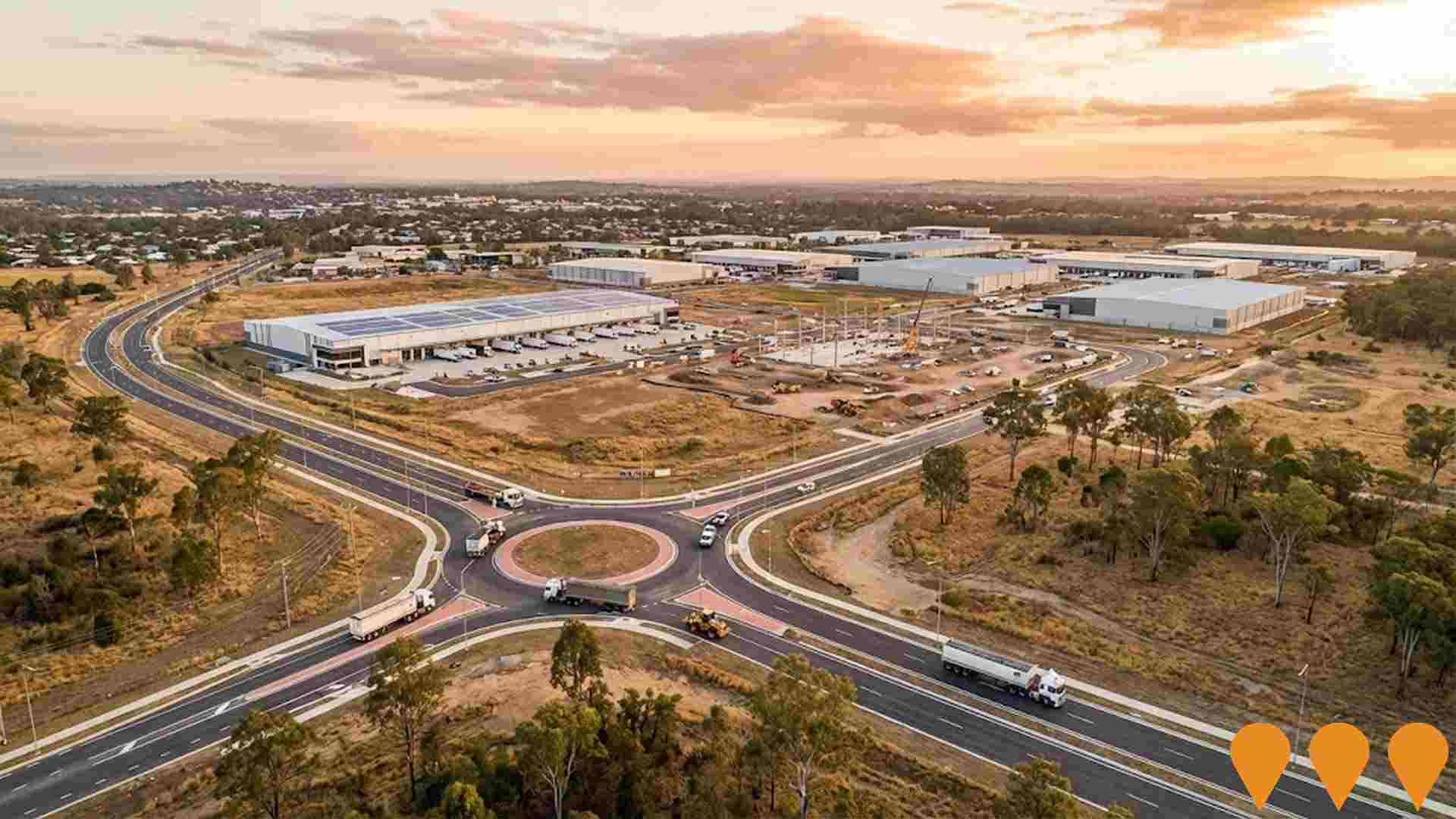Chart Color Schemes
est. as @ -- *
ABS ERP | -- people | --
2021 Census | -- people
Sales Activity
Curious about local property values? Filter the chart to assess the volume and appreciation (including resales) trends and regional comparisons, or scroll to the map below view this information at an individual property level.
Find a Recent Sale
Sales Detail
Population
Riverview has shown very soft population growth performance across periods assessed by AreaSearch
Riverview's population, as of August 2025, is approximately 3172. This figure represents an increase of 105 people since the 2021 Census, which recorded a population of 3067. The change is inferred from the estimated resident population of 3172 in June 2024 and the addition of 7 validated new addresses since the Census date. This results in a population density ratio of 407 persons per square kilometer. Population growth was primarily driven by interstate migration, contributing approximately 55.4% of overall population gains during recent periods.
AreaSearch adopts ABS/Geoscience Australia projections for each SA2 area, released in 2024 with a base year of 2022. For areas not covered and years post-2032, Queensland State Government's SA2 area projections are used, released in 2023 based on 2021 data. However, these state projections do not provide age category splits, so AreaSearch applies proportional growth weightings in line with ABS Greater Capital Region projections for each age cohort. Future population dynamics anticipate a median increase, with Riverview expected to gain 195 persons by 2041 based on the latest numbers, indicating a total increase of approximately 6.2% over the 17-year period.
Frequently Asked Questions - Population
Development
Residential development activity is slightly higher than average within Riverview when compared nationally
Riverview has seen approximately 25 dwelling approvals per year. Over the past five financial years, from FY-21 to FY-25127 homes were approved, with none yet in FY-26. On average, 0.7 people have moved to the area annually for each dwelling built during these years.
This suggests that new construction is keeping pace with or exceeding demand, offering more housing options and potentially driving population growth beyond current projections. The average construction value of new properties has been $297,000, which is below regional levels, indicating more affordable housing choices for buyers. In FY-26, there have been $5.2 million in commercial approvals, reflecting the area's residential character. Comparatively, Riverview has around two-thirds the rate of new dwelling approvals per person compared to Greater Brisbane, while it ranks among the 94th percentile nationally based on areas assessed. However, construction activity has increased recently.
The current development trend consists of 8.0% standalone homes and 92.0% attached dwellings, a significant shift from the existing housing pattern of 96.0% houses. This denser development provides accessible entry options for downsizers, investors, and first-time buyers. It also suggests diminishing developable land availability and responds to evolving lifestyle preferences and affordability needs. The estimated population per dwelling approval in Riverview is 805 people, reflecting its quiet development environment. Future projections indicate that the area will add 195 residents by 2041. At current development rates, new housing supply should comfortably meet demand, providing favourable conditions for buyers and potentially supporting growth beyond current population projections.
Frequently Asked Questions - Development
Infrastructure
Riverview has moderate levels of nearby infrastructure activity, ranking in the 47thth percentile nationally
Changes to local infrastructure significantly influence an area's performance. AreaSearch identified 16 projects likely impacting the area. Key projects include Citiswich Business Park Expansion, Woodlinks Village, Riverview Townhomes and Apartments, and ForestBrook. The following details those most relevant.
Professional plan users can use the search below to filter and access additional projects.
INFRASTRUCTURE SEARCH
 Denotes AI-based impression for illustrative purposes only, not to be taken as definitive under any circumstances. Please follow links and conduct other investigations from the project's source for actual imagery. Developers and project owners wishing us to use original imagery please Contact Us and we will do so.
Denotes AI-based impression for illustrative purposes only, not to be taken as definitive under any circumstances. Please follow links and conduct other investigations from the project's source for actual imagery. Developers and project owners wishing us to use original imagery please Contact Us and we will do so.
Frequently Asked Questions - Infrastructure
Ipswich to Springfield Central Public Transport Corridor (I2S)
The Ipswich to Springfield Central Public Transport Corridor (I2S) is a proposed 25 km dedicated mass transit corridor linking Ipswich Central and Springfield Central via Ripley and Redbank Plains. The project includes nine new stations and will support future growth in one of South East Queenslands fastest-growing regions. The Options Analysis was completed in late 2024. A Detailed Business Case, jointly funded by the Australian Government, Queensland Government and Ipswich City Council under the South East Queensland City Deal, is scheduled to commence in 2026. Delivery mode (heavy rail, trackless tram or other) and final alignment are still under investigation.

Woodlinks Village
Master-planned community spanning 78 hectares with 900 allotments, featuring over 30% dedicated to parklands and open spaces. The development includes a 5,000 sqm community park with playground, basketball court, and picnic areas, pedestrian walkways, and cyclepaths along rehabilitated Goodna Creek. Located within walking distance of WoodLinks State School and Woolworths Marketplace, offering affordable fixed-price homes with various block sizes.

Ipswich Bus Service Improvements - Growth Areas
Enhanced bus services for Ipswich growth areas including Collingwood Park, featuring increased frequency, new routes, and improved connectivity to support population growth and reduce car dependency.
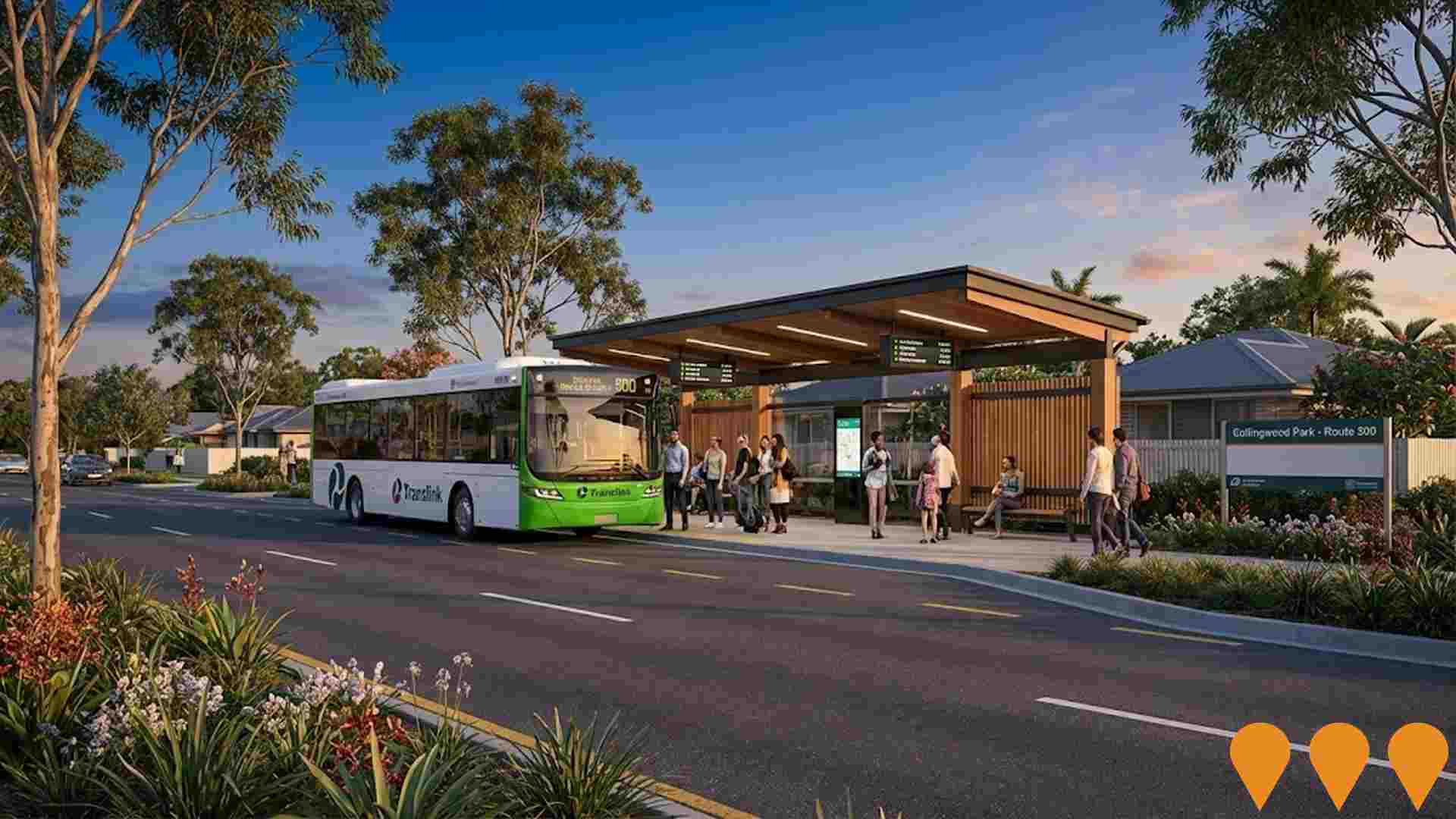
Bundamba State Secondary College Redevelopment
Major $80+ million redevelopment and expansion of Bundamba State Secondary College including new teaching blocks, performing arts centre, sports facilities and administration building.
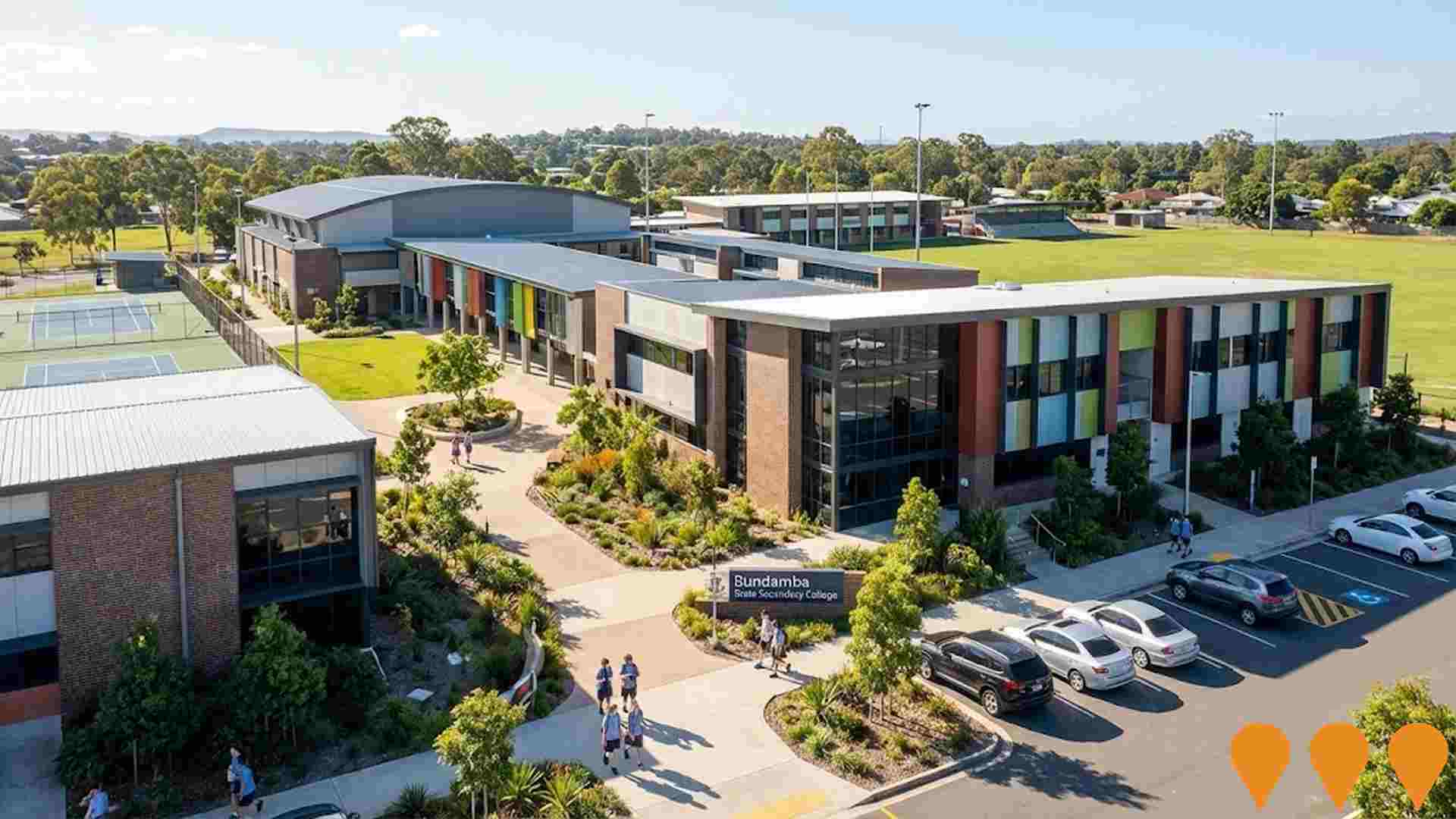
Citiswich Business Park Expansion
Expansion of Citiswich Business Park providing additional commercial and industrial space. Strategic employment hub supporting western Brisbane corridor economic development with modern facilities and transport connectivity.

Collingwood Park State Secondary College
New state high school being constructed for the growing area of Collingwood Park. Stage 1 includes administration building, art and design, general learning centre, science, industrial technology and design resource centre, food services, hospitality, amenities, oval, car parking and operational services. Opening for Year 7 and Year 8 students in Term 1, 2025.
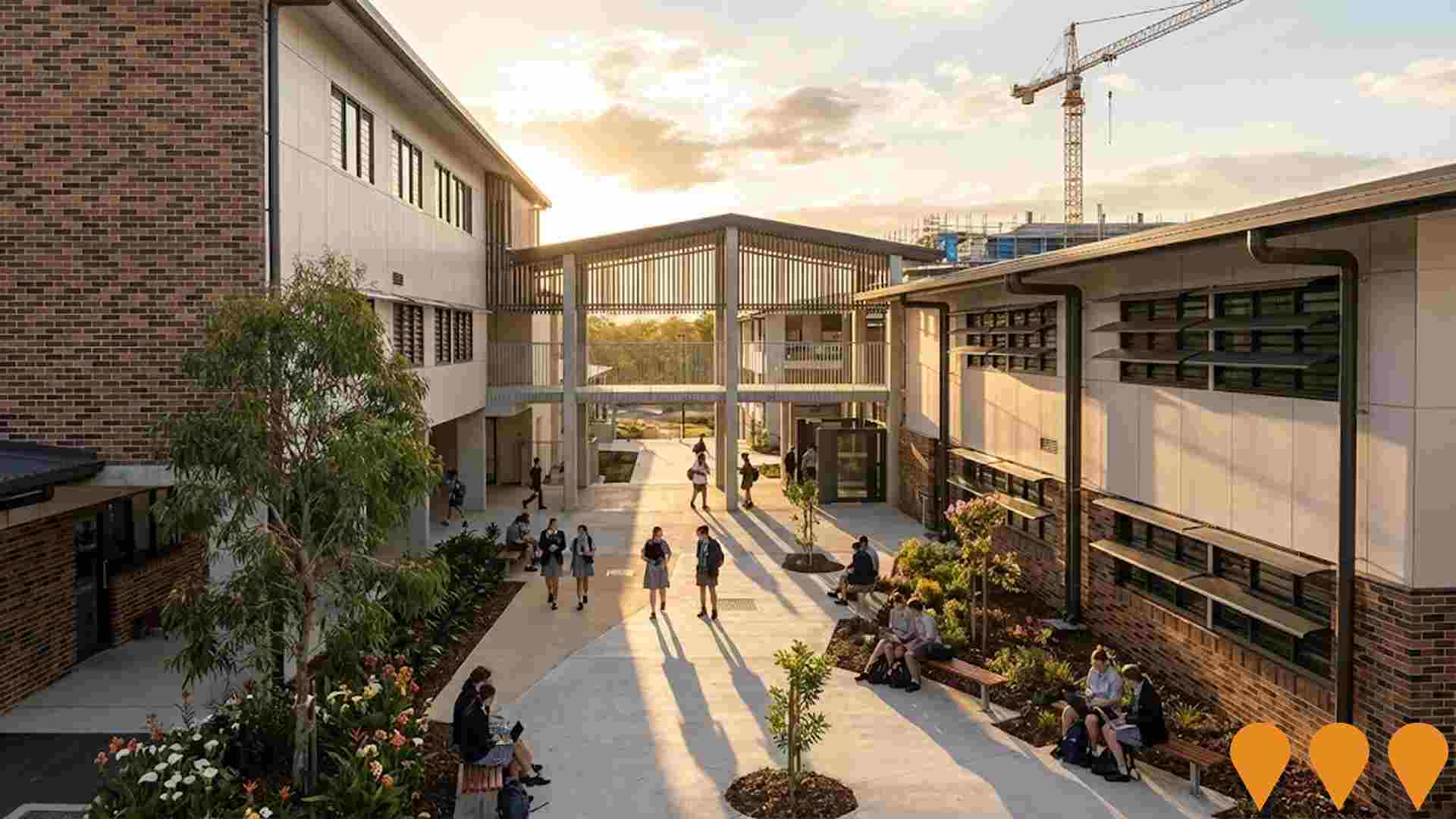
Redbank Plains Road Upgrade Stage 4
Major road infrastructure upgrade to improve traffic flow and safety along Redbank Plains Road. Upgrade of Redbank Plains Road between the Cunningham Highway and Collingwood Drive to a four lane urban arterial with improved pedestrian and cycling facilities, new traffic signals, dedicated turning lanes, intersection improvements, and enhanced drainage infrastructure. Includes road widening, intersection improvements, cycling infrastructure, and enhanced pedestrian facilities to support the growing population in the corridor.
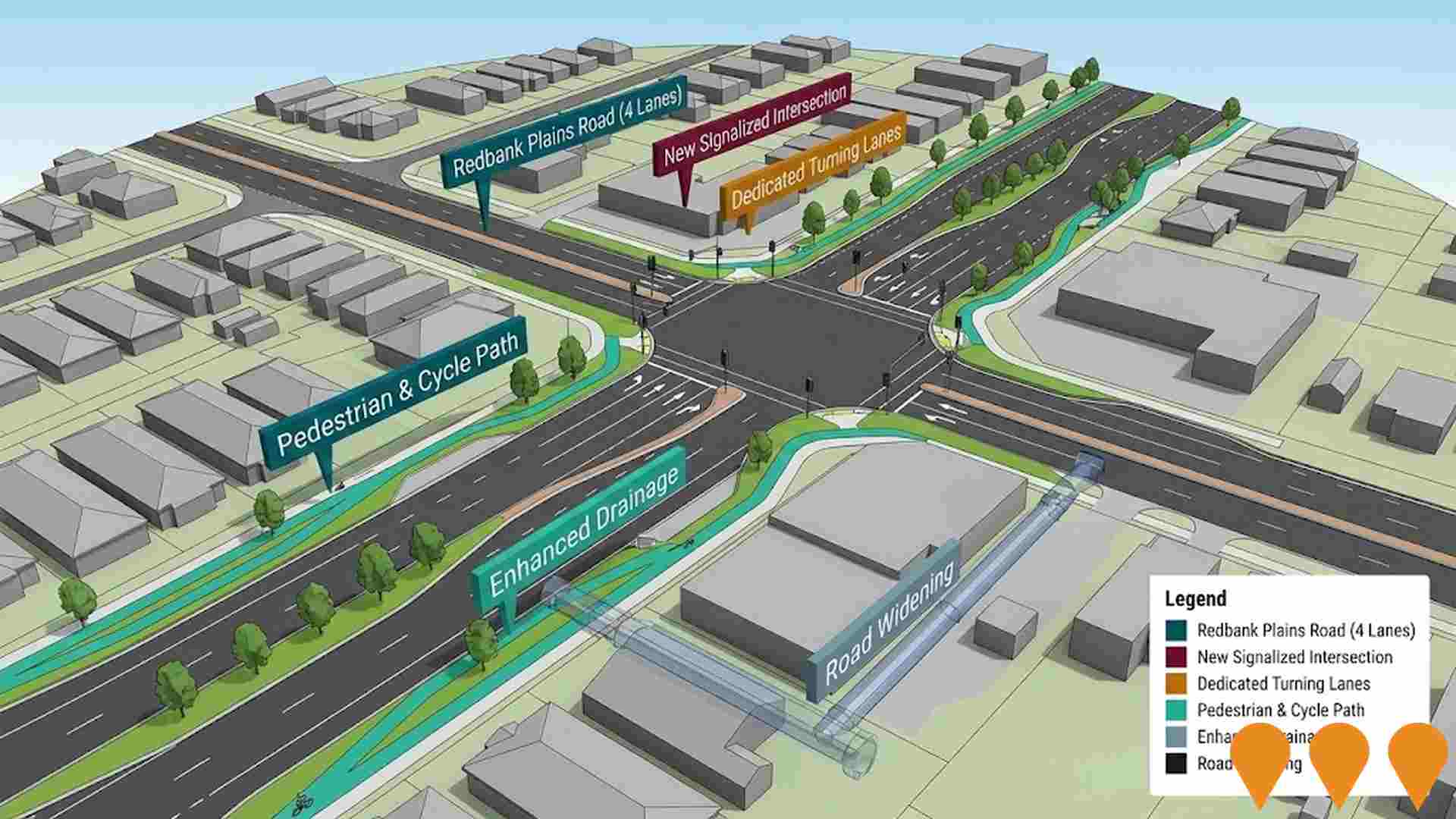
Little Snappers Swim School Collingwood Park
Development-approved swim school facility on 1,190 square meter site. Little Snappers is a family-owned boutique swim school brand with over 40 years of experience, featuring small class sizes and programs for all ages from newborns to squads. The facility will address the lack of local swim facilities in this rapidly growing family suburb, adjacent to Imagine Child Care Centre.

Employment
Employment conditions in Riverview face significant challenges, ranking among the bottom 10% of areas assessed nationally
Riverview has a diverse workforce with manufacturing and industrial sectors prominently represented. The unemployment rate was 17.5% in June 2025, higher than Greater Brisbane's 4.1%.
Employment growth over the past year was estimated at 1.5%. As of June 2025, 1,033 residents were employed with an unemployment rate of 13.4%, significantly above Greater Brisbane's rate. Workforce participation in Riverview was 42.5%, much lower than Greater Brisbane's 64.5%. Employment is concentrated in manufacturing, health care & social assistance, and retail trade.
Manufacturing has a particularly high share at 2.4 times the regional level, while professional & technical services have limited presence at 3.5% compared to the regional 8.9%. The worker-to-resident ratio was 0.8 as of the Census, indicating substantial local employment opportunities. Between June 2024 and June 2025, employment levels increased by 1.5%, labour force grew by 0.2%, reducing the unemployment rate by 1.0 percentage points. In comparison, Greater Brisbane had employment growth of 4.4% and a 0.4 percentage point decrease in unemployment. Jobs and Skills Australia's national employment forecasts from May 2025 project overall growth of 6.6% over five years and 13.7% over ten years. Applying these projections to Riverview's employment mix suggests local growth could be approximately 5.7% over five years and 12.5% over ten years, though this is a simplified extrapolation for illustrative purposes only and does not account for localized population projections.
Frequently Asked Questions - Employment
Income
Income metrics place the area in the bottom 10% of locations nationally according to AreaSearch analysis
Riverview's median taxpayer income was $45,427 and average income was $48,673 in financial year 2022, according to the latest postcode level ATO data aggregated by AreaSearch. This is below the national average of $55,645 (median) and $70,520 (average), as reported for Greater Brisbane. Based on Wage Price Index growth of 13.99% since financial year 2022, estimated median income in Riverview would be approximately $51,782 and average income would be around $55,482 by September 2025. Census data shows that household, family, and personal incomes in Riverview all fall between the 4th and 7th percentiles nationally. Income distribution data indicates that the largest segment comprises 32.5% earning $800 - $1,499 weekly (1,030 residents), differing from patterns across the surrounding region where $1,500 - $2,999 dominates with 33.3%. Housing affordability pressures are severe in Riverview, with only 81.5% of income remaining after housing costs, ranking at the 7th percentile nationally.
Frequently Asked Questions - Income
Housing
Riverview is characterized by a predominantly suburban housing profile, with a higher proportion of rental properties than the broader region
The latest Census evaluated dwelling structures in Riverview as 96.2% houses and 3.8% other dwellings (semi-detached, apartments, 'other' dwellings), compared to Brisbane metro's 88.4% houses and 11.6% other dwellings. Home ownership in Riverview stood at 23.0%, with mortgaged dwellings at 26.2% and rented dwellings at 50.8%. The median monthly mortgage repayment was $1,092, below Brisbane metro's average of $1,517. Median weekly rent in Riverview was $270, compared to Brisbane metro's $300. Nationally, Riverview's mortgage repayments were significantly lower than the Australian average of $1,863, while rents were substantially below the national figure of $375.
Frequently Asked Questions - Housing
Household Composition
Riverview features high concentrations of group households, with a lower-than-average median household size
Family households account for 68.1% of all households, including 22.7% couples with children, 22.7% couples without children, and 20.3% single parent families. Non-family households constitute the remaining 31.9%, with lone person households at 26.9% and group households comprising 5.2%. The median household size is 2.5 people, which is smaller than the Greater Brisbane average of 2.6.
Frequently Asked Questions - Households
Local Schools & Education
Riverview faces educational challenges, with performance metrics placing it in the bottom quartile of areas assessed nationally
The area faces educational challenges, with university qualification rates at 11.2%, substantially below the Greater Brisbane average of 30.5%. This presents both a challenge and an opportunity for targeted educational initiatives. Bachelor degrees are most common at 7.3%, followed by postgraduate qualifications (2.6%) and graduate diplomas (1.3%). Trade and technical skills are prominent, with 40.2% of residents aged 15+ holding vocational credentials – advanced diplomas (9.6%) and certificates (30.6%).
Educational participation is high, with 33.2% of residents currently enrolled in formal education. This includes 13.8% in primary education, 10.1% in secondary education, and 2.6% pursuing tertiary education. Riverview's 3 schools have a combined enrollment reaching 1,366 students. The area demonstrates varied educational conditions across Riverview, with educational provision following conventional lines split between 1 primary and 2 secondary institutions. As an education hub, the area functions with 43.1 school places per 100 residents – significantly above the regional average of 18.0 – attracting students from surrounding communities. Note: where schools show 'n/a' for enrolments, please refer to parent campus.
Frequently Asked Questions - Education
Schools Detail
Nearby Services & Amenities
Transport
Transport servicing is high compared to other areas nationally based on assessment of service frequency, route connectivity and accessibility
Riverview has 27 active public transport stops. These include a mix of train and bus services. The stops are served by 49 individual routes.
Together, these routes provide 1,575 weekly passenger trips. Residents have excellent transport accessibility, with an average distance of 185 meters to the nearest stop. On average, there are 225 trips per day across all routes. This equates to approximately 58 weekly trips per individual stop.
Frequently Asked Questions - Transport
Transport Stops Detail
Health
Health performance in Riverview is a key challenge with a range of health conditions having marked impacts on both younger and older age cohorts
Riverview faces significant health challenges, with various conditions affecting both younger and older age cohorts. Private health cover is low, at approximately 46% of the total population (around 1,455 people), compared to Greater Brisbane's 49.9%. Nationally, this figure stands at 55.3%.
Mental health issues and asthma are the most prevalent conditions in Riverview, affecting 13.2% and 11.4% of residents respectively. Conversely, 53.4% of residents report no medical ailments, compared to 62.2% across Greater Brisbane. The area has a higher proportion of seniors aged 65 and over, at 18.8% (around 597 people), compared to Greater Brisbane's 15.3%. Health outcomes among seniors in Riverview are broadly similar to those of the general population.
Frequently Asked Questions - Health
Cultural Diversity
The level of cultural diversity witnessed in Riverview was found to be above average when compared nationally for a number of language and cultural background related metrics
Riverview's cultural diversity was above average, with 23.2% of its population born overseas and 16.7% speaking a language other than English at home. Christianity was the predominant religion in Riverview, accounting for 45.0% of the population. However, the most notable overrepresentation was in the 'Other' category, comprising 1.3% compared to 0.8% across Greater Brisbane.
In terms of ancestry, the top three groups were Australian (26.0%), English (26.0%), and Australian Aboriginal (7.8%). Notably, Samoan (5.2%) was overrepresented in Riverview compared to the regional average of 0.9%, as were Maori (1.9% vs 0.9%) and Dutch (1.8% vs 1.3%).
Frequently Asked Questions - Diversity
Age
Riverview's population is slightly younger than the national pattern
Riverview's median age is nearly 37 years, closely matching Greater Brisbane's average of 36 and slightly below Australia's median of 38. Compared to Greater Brisbane, Riverview has a higher proportion of residents aged 75-84 (7.1%) but fewer residents aged 25-34 (13.6%). Between the 2021 Census and now, the population aged 35-44 has increased from 10.9% to 13.0%, while the 15-24 age group has grown from 11.8% to 13.2%. Conversely, the 5-14 age group has decreased from 15.6% to 12.4%. By 2041, demographic modeling suggests Riverview's age profile will change significantly. The 75-84 cohort is projected to grow by 53%, adding 117 residents to reach 342. Residents aged 65 and above are expected to drive 79% of population growth. Meanwhile, the 15-24 and 0-4 age groups are projected to experience population declines.

